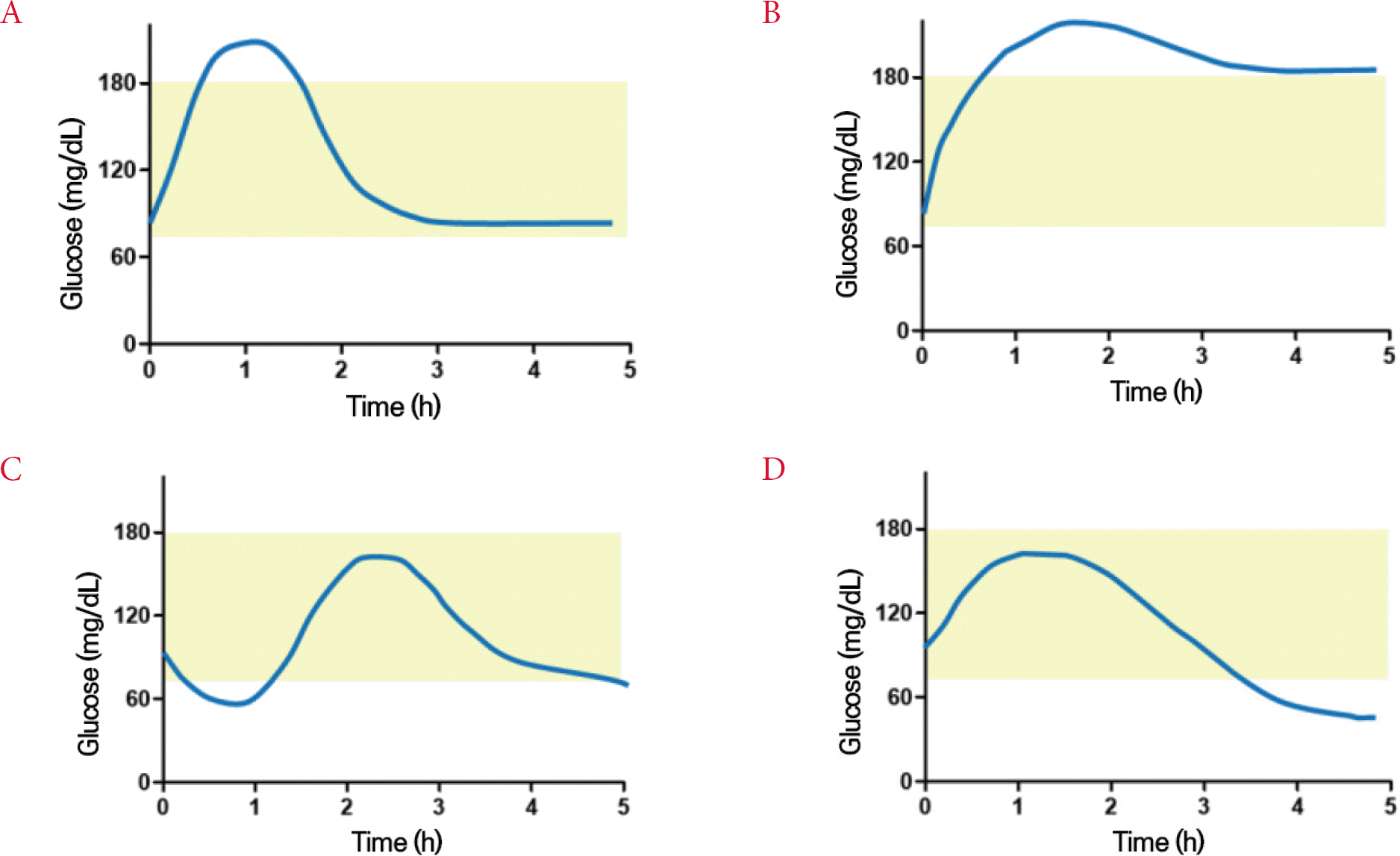1. Beck RW., Bergenstal RM., Laffel LM., Pickup JC. Advances in technology for management of type 1 diabetes. Lancet. 2019. 394:1265–73.

2. Aleppo G., Ruedy KJ., Riddlesworth TD., Kruger DF., Peters AL., Hirsch I, et al. REPLACE-BG Study Group. REPLACE-BG: a randomized trial comparing continuous glucose monitoring with and without routine blood glucose monitoring in adults with well-controlled type 1 diabetes. Diabetes Care. 2017. 40:538–45.

3. Battelino T., Danne T., Bergenstal RM., Amiel SA., Beck R., Biester T, et al. Clinical targets for continuous glucose monitoring data interpretation: recommendations from the international consensus on time in range. Diabetes Care. 2019. 42:1593–603.
4. Bergenstal RM., Beck RW., Close KL., Grunberger G., Sacks DB., Kowalski A, et al. Glucose management indicator (GMI): a new term for estimating A1C from continuous glucose monitoring. Diabetes Care. 2018. 41:2275–80.

5. Beck RW., Bergenstal RM., Riddlesworth TD., Kollman C., Li Z., Brown AS, et al. Validation of time in range as an outcome measure for diabetes clinical trials. Diabetes Care. 2019. 42:400–5.

6. Maiorino MI., Signoriello S., Maio A., Chiodini P., Bellastella G., Scappaticcio L, et al. Effects of continuous glucose monitoring on metrics of glycemic control in diabetes: a systematic review with meta-analysis of randomized controlled trials. Diabetes Care. 2020. 43:1146–56.

7. Johnson ML., Martens TW., Criego AB., Carlson AL., Simonson GD., Bergenstal RM. Utilizing the ambulatory glucose profile to standardize and implement continuous glucose monitoring in clinical practice. Diabetes Technol Ther. 2019. 21(S2):S217–25.

8. Bell KJ., Barclay AW., Petocz P., Colagiuri S., Brand-Miller JC. Efficacy of carbohydrate counting in type 1 diabetes: a systematic review and meta-analysis. Lancet Diabetes Endocrinol. 2014. 2:133–40.

9. Ajjan RA., Cummings MH., Jennings P., Leelarathna L., Rayman G., Wilmot EG. Optimising use of rate-of-change trend arrows for insulin dosing decisions using the FreeStyle Libre flash glucose monitoring system. Diab Vasc Dis Res. 2019. 16:3–12.

10. Nakamura T., Hirota Y., Hashimoto N., Matsuda T., Takabe M., Sakaguchi K, et al. Diurnal variation of carbohydrate insulin ratio in adult type 1 diabetic patients treated with continuous subcutaneous insulin infusion. J Diabetes Investig. 2014. 5:48–50.

11. Smart CE., Evans M., O’Connell SM., McElduff P., Lopez PE., Jones TW, et al. Both dietary protein and fat increase postprandial glucose excursions in children with type 1 diabetes, and the effect is additive. Diabetes Care. 2013. 36:3897–902.

12. Bell KJ., Smart CE., Steil GM., Brand-Miller JC., King B., Wolpert HA. Impact of fat, protein, and glycemic index on postprandial glucose control in type 1 diabetes: implications for intensive diabetes management in the continuous glucose monitoring era. Diabetes Care. 2015. 38:1008–15.

13. Kuroda A., Kaneto H., Yasuda T., Matsuhisa M., Miyashita K., Fujiki N, et al. Basal insulin requirement is ∼30% of the total daily insulin dose in type 1 diabetic patients who use the insulin pump. Diabetes Care. 2011. 34:1089–90.

14. Ostrovski I., Lovblom LE., Scarr D., Weisman A., Cardinez N., Orszag A, et al. Analysis of prevalence, magnitude and timing of the dawn phenomenon in adults and adolescents with type 1 diabetes: descriptive analysis of 2 insulin pump trials. Can J Diabetes. 2020. 44:229–35.






 PDF
PDF Citation
Citation Print
Print


 XML Download
XML Download